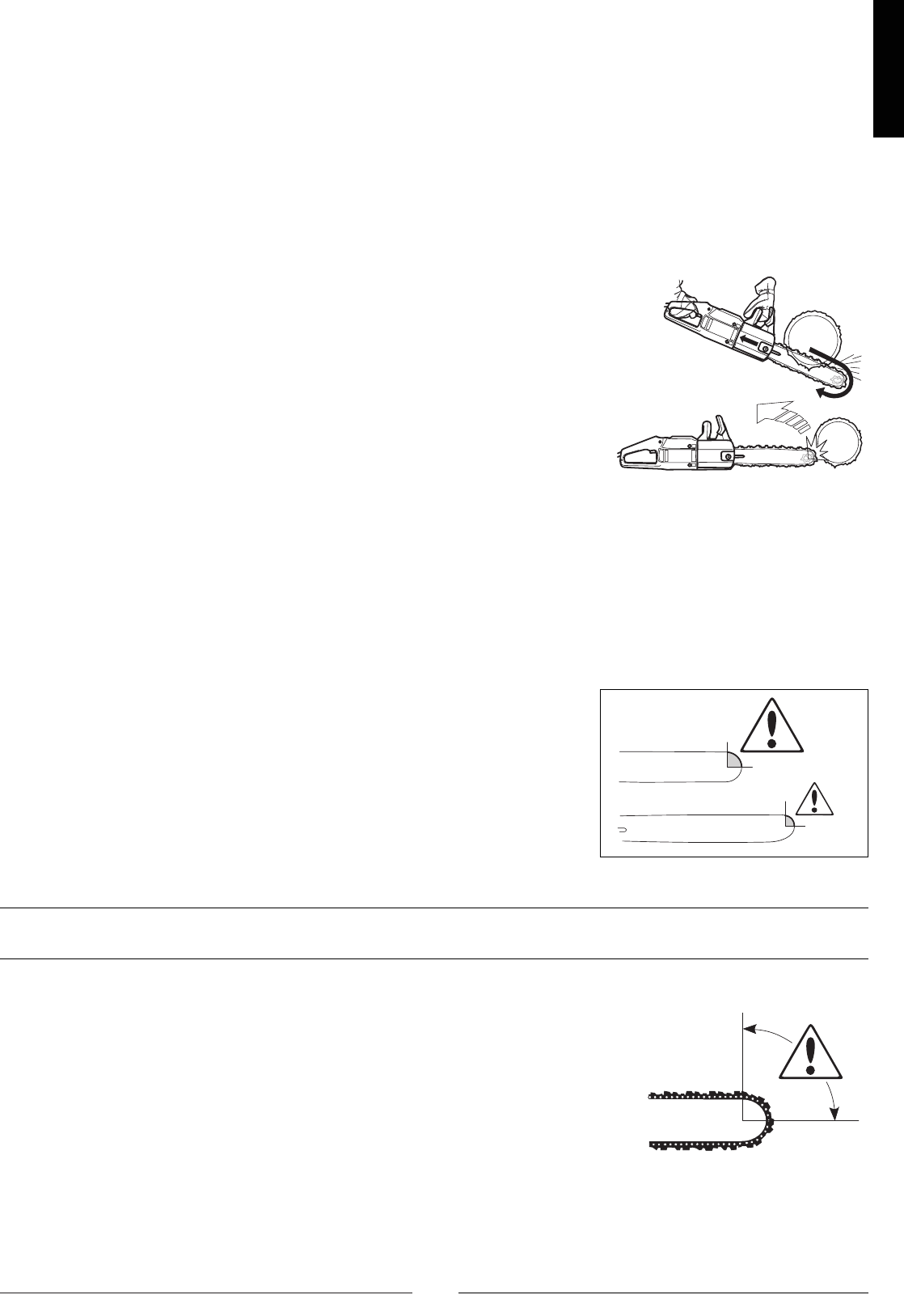
• Most accidents caused by kickbacks take place in connection with limbing. Make certain your footing is
secure and that there are no i objects nearby which may trip you or make you lose your balance. If you
are not careful, the kickback danger zone could make contact with a branch, a nearby tree or some other
object which could cause a kickback.
•Never use a chain saw to cut above shoulder height, and do not cut with the guide bar nose.
Never operate a chain saw while holding it with only one hand!
• Maintain full speed while cutting.
•Take extreme care when cutting with the top chain (on the underside
of a log). The force of the chain action pushes the saw backwards,
and if the operator does not maintain firm control, the kickback danger
zone may move far enough back into the kerf to produce a kickback.
Cutting with the bottom chain (on the top side of the log) pulls the saw
forward. This presses the power head firmly against the tree, providing
a steady support and giving the operator added control over the saw
and consequently over the kickback danger zone.
•Follow the maintenance and sharpening instructions for the chain
and guide bar. When replacing chains and guide bars, use only
combinations recommended by us. See «Technical Specifications».
• The smaller the bar nose radius, the smaller the kickback danger zone
and thus the kickback tendency.
• By using low-kickback cutting equipment and keeping the cutters
properly sharpened, the strength of a kickback can be greatly reduced.
Your chain saw is equipped with a chain brake designed to stop the
chain instantaneously in the event of a kickback. A chain brake can
reduce the risk of accident, but only the operator can prevent accidents
from happening.
Be extremely careful when operating a chain saw and do not allow the
kickback danger zone to make contact with anything.
9
ENGLISH
CHAIN BRAKE WITH KICKBACK GUARD
1. ENGELSK 1-22 H A4 27.05.03 19:37 Side 9


















